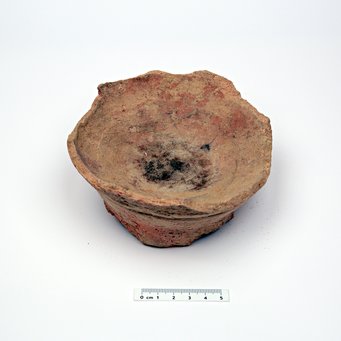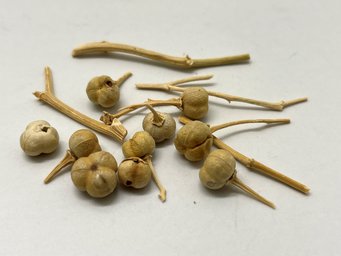A new study uses metabolic profiling to uncover ancient knowledge systems behind therapeutic and psychoactive plant use in ancient Arabia.

One of the ancient fumigation devices used in the inhalation of harmal
© Hans Sell
New research published in Communications Biology has uncovered the earliest known use of the medicinal and psychoactive plant Peganum harmala, commonly known as Syrian rue or harmal, in fumigation practices and inhaled as smoke. The findings offer unprecedented insight into early Arabian therapeutic and sensorial practices, revealing that native plants were already being deliberately used for their bioactive and psychoactive properties nearly 2,700 years ago.

The oasis settlement of Qurayyah in northwestern Saudi Arabia
© A. M. Abualhassan
Led by Dr. Barbara Huber (Max Planck Institute of Geoanthropology) and Professor Marta Luciani (University of Vienna), in collaboration with the Heritage Commission of the Saudi Ministry of Culture, the study applied advanced metabolic profiling techniques to analyze organic residues preserved inside Iron Age fumigation devices. The devices were excavated at the oasis settlement of Qurayyah in northwestern Saudi Arabia, a locale known in antiquity for its decorated ceramic vessels, today called Qurayyah Painted Ware.
"Our findings represent chemical evidence for the earliest known burning of harmal, not just in Arabia, but globally," says Barbara Huber, lead author of the study. "Our discovery sheds light on how ancient communities drew on traditional plant knowledge and their local pharmacopeia to care for their health, purify spaces, and potentially trigger psychoactive effects."
The study employed high-performance liquid chromatography-tandem mass spectrometry (HPLC-MS/MS), a powerful analytical technique that enables the detection of characteristic harmala alkaloids even in tiny, degraded samples.
"The integration of biomolecular analysis with archaeology has allowed us to identify not just what kind of plants people were using, but also where, how, and why," says Prof. Marta Luciani, excavation director at Qurayyah and archaeologist at the University of Vienna. "We're gaining access to plant-based practices that were central to daily life but are rarely preserved in the archaeological record."

Dried fruit of Peganum harmala, show here to have been already in use for its therapeutic and psychoactive properties 2,7000 years ago
© Barbara Huber
Known for its antibacterial, psychoactive, and therapeutic properties, Peganum harmala is still used in traditional medicine and household fumigation practices today in the region. The new findings underscore its long-standing cultural and medicinal significance.
"This discovery shows the deep historical roots of traditional healing and fumigation practices in Arabia," adds Ahmed M. Abualhassan, Heritage Commission co-director of the Qurayyah project. "We're preserving not only objects, but the intangible cultural heritage of ancient knowledge that still holds relevance in local communities today."
The study's implications stretch beyond archaeology into fields such as ethnobotany, medical anthropology, heritage studies, and pharmacognosy - all concerned with the long-term relationship between humans, medicinal plants and natural resources.






